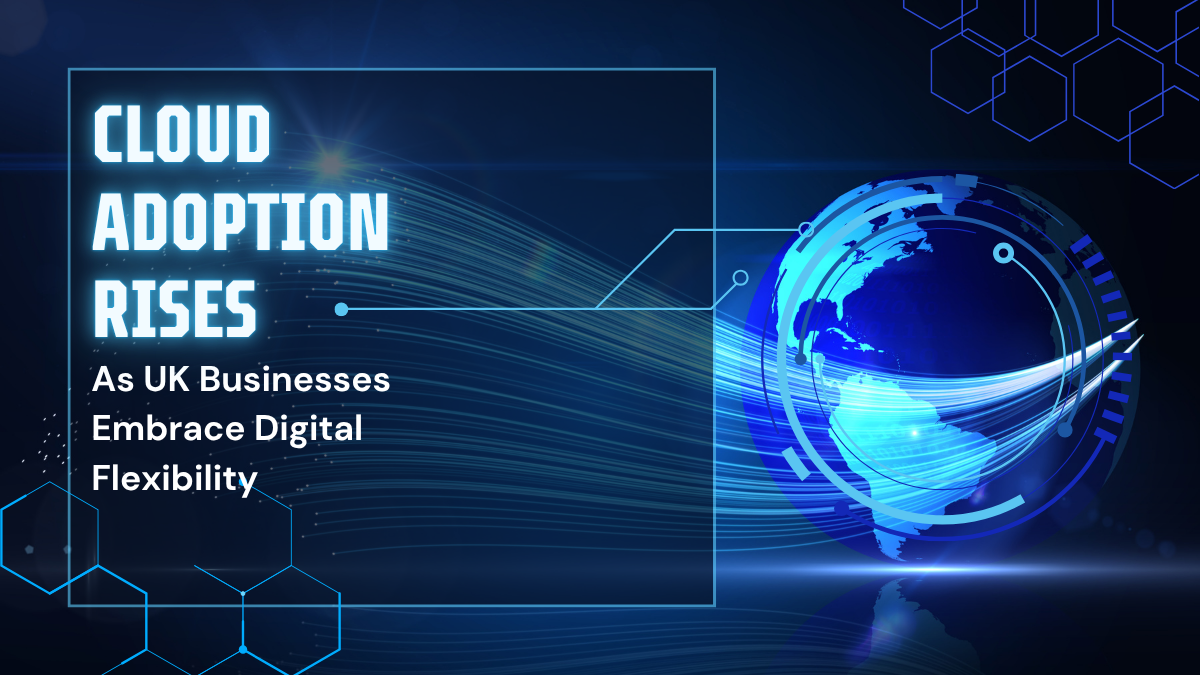Cloud software development is the future of digital transformation. Adopting cloud services allows businesses to reach a wider audience, reduce costs, scale applications, effectively provision resources, and implement disaster recovery planning over a simple internet connection.
Statista shows that 73% of global enterprises adopted cloud technology using the hybrid cloud approach in 2024, with another 14% using multi-public cloud adoption, 10% adopting single-public cloud services, another 2% using multiple private clouds, and 1% adopting a single private cloud provider.
At Pulsion, we provide a range of cloud software development services, ranging from migration to application and infrastructure development to deliver the best cloud technology. Discover our services with a comprehensive guide to cloud software development to empower informed decisions.
What Are Cloud Software Development Services?
Cloud computing is an infrastructure model in which internal processes and resources are outsourced to external data centers and cloud storage. Cloud computing uses an internet connection as the primary source of data delivery across servers based in different regions.
Cloud software development services refer to development companies creating cloud applications, deploying them into cloud-based environments, using cloud storage solutions, and migrating data management, device access, networking, and cybersecurity to the chosen cloud platform.
Cloud software development services also include cloud migration services, allowing businesses to migrate legacy systems and outdated infrastructure to the cloud. Discover the benefits of cloud computing before seeing the various services our expert developers provide.
The Benefits of Cloud Computing Services
Cloud application development, migration, and cloud computing power solutions benefit businesses, regardless of company size and current infrastructure. Some advantages include cost reductions, improved accessibility, global reach, and fast resource provisioning.
Cost Efficient Cloud Apps
Hosting servers and other services in a virtual environment costs far less than buying the physical hardware when testing the waters with new software solutions. Our teams will show you how to reduce cloud hosting costs to ensure seamless market entry without costly upfront expenses.
Scalability and Easy Deployment
Scale faster when replacing traditional server hosting and physical hardware with cloud infrastructure designed to distribute servers and data capacity, welcoming scalable opportunities. Flexible cloud infrastructure and data centers also streamline deployment for a faster time to market.
Broaden User Reach Globally
Implementing cloud services in software development allows companies to reach a broader audience with extensive availability zones. Microsoft Azure has hundreds of availability zones with various data centers across regions but recommends multi-region and multi-zone cloud apps for wider reach.
Disaster Recovery
Cloud computing enables streamlined sensitive data backups and recovery procedures. Some providers offer out-of-the-box data mirroring and backup solutions, while Google Cloud even offers Disaster-Recovery-as-a-Service (DRaaS), keeping sensitive information secure for recovery.
Fast Resource Provisioning
Cloud providers allow businesses to provision resources more easily and quickly versus traditional IT infrastructure, which requires extensive planning and various test environments. Cloud resources are more readily available with a quick cloud readiness checklist to guide the planning and migration stages.
Multiple Models Available
Cloud services aren’t inflexible and can be tailored to a company’s needs and objectives at an additional fee, which is more flexible than traditional IT infrastructure and private clouds. Cloud app development is highly customisable with the right custom software development company.
Cloud Software Development Services at Pulsion
Custom Cloud Application Development
Our services include the bespoke development and deployment of applications and platforms to Google Cloud, Azure, and Amazon Web Services (AWS) or other cloud-based services. We can also develop Infrastructure-as-a-Service (IaaS) and Platform-as-a-Service (PaaS) cloud technology.
Serverless Architecture Development
Our software developers can create serverless architecture for cloud apps using Microsoft Azure Functions, AWS Lambda, Google App Engine, and Google Functions. Use utility computing to check infrastructure as needed while streamlining cloud resources management when busy.
Cloud-Native Microservices Development
Leverage highly secure cloud application development using our cloud-native microservices development team. Our software developers build scalable microservices architecture with Kubernetes, Docker, and other containerisation tools, providing enhanced data security for cloud apps.
Cloud DevOps and CI/CD Pipelines
Work with a cloud app development team capable of injecting DevOps into cloud solutions to ensure the continuous integration, delivery, and deployment of essential data with cloud-related CI/CD pipelines. Our DevOps engineers can deploy cloud applications almost instantly following best practices.
Cloud-Based Data Analytics
Transform data into profits while securing a broader reach when discussing Big Data integration into cloud-based applications with our artificial intelligence consultants. Our expert team will deploy cloud-based data analytics using AWS Redshift, Google BigQuery, and Azure Synapse.
Cloud Security Services
We pride ourselves on being cloud computing providers who implement security best practices to protect sensitive information against data leaks and breaches. Our teams implement secure access controls for multiple users, compliance solutions, threat detection, and data protection strategies.
Cloud Integration Services
Partner with a trusted cloud software development and migration company to ensure seamless integrations between physical infrastructure on the business premises and cloud-based solutions to ensure a streamlined cloud migration strategy for existing web-based apps, hardware, and software.
Cloud Migration Services
Our cloud migration services assist clients in moving on-premises workloads, processes, databases, and applications to a cloud platform, reducing the need for on-site infrastructure, IT resources, and costly maintenance in cloud-based solutions with access to pay-as-you-go cloud services.
Hybrid and Multi-Cloud Software Development
Gain access to cloud services from a software development company capable of migrating and developing applications on multiple clouds, whether clients prefer private clouds or public clouds. We also provide hybrid cloud setups to ensure efficient integrations between on-site and cloud platforms.
Cloud Monitoring and Maintenance
Protect the company’s valuable cloud applications with cloud monitoring and maintenance services intended to keep apps safe, enhance security protocols, and infuse the latest cloud computing services into an application. We provide regular updates and performance optimisation cloud services.
A Complete Guide to Cloud Computing
Cloud computing provides a range of benefits and some challenges companies overcome with the right development team. However, discover everything companies need to know about cloud computing before choosing the ideal cloud software service provider to meet their business objectives.
What Is a Cloud Model?
A cloud model describes how businesses deliver services to other companies and users through a web browser connected to the internet. For example, a cloud model would be software applications that allow other businesses and customers to use the primary company’s services on a platform or network.
Not all web applications are cloud-based, but a cloud model famously describes Software-as-a-Service (SaaS), Platform-as-a-Service (PaaS), and Infrastructure-as-a-Service (IaaS). SaaS products are well-known and describe how a software development company serves a bank with technology needs.
Examples of Common Types of Cloud Technology Used in Software Development
A cloud-based application uses different types of cloud technology or cloud models. Here are some well-known examples of cloud-based development using different cloud models:
- Software-as-a-Service: SaaS applications like Zoom, DropBox, and Google allow individuals or businesses to use software without paying to write code or create products from scratch.
- Platform-as-a-Service: PaaS applications like Google App Engine, Microsoft Azure, and AWS Lambda allow developers to create and deploy software in set production environments.
- Infrastructure-as-a-Service: IaaS applications like HubSpot, ZenDesk, and DocuSign allow users to access project management and other tools without physical infrastructure.
Another way to define the differences is that IaaS has enterprise-ready resources, servers, networks, and storage. SaaS is software that uses the internet to deliver services to customers and businesses. PaaS solutions are often used by developers to create products or designers to deliver visual products.
5 Common Cloud Deployment Models and Well-Known Cloud Providers
Discover which cloud deployment models exist before choosing the right strategy for a company. The five primary cloud computing deployment models include:
- Hybrid Cloud: A combination of on-site infrastructure and software with cloud solutions.
- Private Cloud: Cloud computing resources specifically tailored to a company with limited access.
- Public Cloud: Cloud resources and services are available to the public on public clouds.
- Multi-Cloud: A blend of private clouds and public clouds or a number of each provider.
- Community Cloud: A shared cloud with multiple tenants and organisations in the same industry.
Additionally, there are more cloud providers than some businesses realise. Everyone knows Google Cloud, Azure, and AWS, but here are 10 more public clouds that companies can use to establish successful digital transformation strategies:
- Adobe Creative Cloud
- Alibaba Cloud
- Digital Ocean
- Heroku
- Hetzner Cloud
- IBM Cloud
- Open Stack
- Oracle Cloud
- Panorama 9
- Red Hat
Key Features of Cloud Computing
Cloud computing provides access to various services and features that could convince companies to adopt cloud services. Understand the key features of cloud development before using a software service provider to create cloud solutions tailored to business needs and consumer demands.
On-Demand Self-Service
Cloud solutions service themselves, unlike traditional software development products and web applications. A cloud platform requires no human intervention to provision customers or operate, with cloud services using web portals to provide interested users with access to cloud resources.
Resource Pooling and Multi-Tenancy
Cloud software development strategically pools resources and allocates them based on demand. Multiple users can access the cloud’s front end simultaneously while never being aware of each other. A cloud platform can source multiple tenants and users to provide resources when and where needed.
Measured Service
Cloud development allows businesses to use the pay-as-you-go framework, saving money by paying only for what customers and users access and use. The pay-as-you-go model works with an integrated or measured service to ensure cloud providers charge users accurately.
Broad Network Access
The National Institute of Standards and Technology (NIST) also describes the easy accessibility of a broad network as being a key characteristic of cloud computing. Cloud computing improves accessibility by allowing users with multiple devices and operating systems to access the resources.
Provider Maintenance
Leverage computing power that reduces the need for in-house expertise because cloud app development also allows companies to rely on provider maintenance and updates. Cloud service providers keep cloud solutions functional and available with provider-based maintenance.
Elasticity and Disposal
Cloud providers don’t need professionals to break down unused or redundant resources, allowing companies to easily dispose of applications and functions quickly. Meanwhile, scalability and elasticity come from being able to incorporate new resources without a long and daunting process.
Non-Negotiable Security Measures for Cloud Software Development
Partnering with trusted software developers from an AWS partner or Microsoft Azure partner ensures that cloud-based solutions have the most secure infrastructure. Application and data security are also pivotal to any ISO 270001-certified cloud software development company following GDPR standards.
- Establish Governance Policies
Our software developers implement governance policies and procedures to achieve enhanced data security in cloud software development services. These policies are aligned with a company’s internal security protocols to ensure organisation-wide operational standards that keep apps secure.
- Segment the Network
Our cloud software development services also create segments in the cloud infrastructure to quickly address concerns in the case of data breaches, isolating the segments for ongoing maintenance. Free lateral movement across networks becomes restricted to keep cyber attackers out of sensitive data.
- Automate Security Processes
As leading cloud providers in the UK, our software developers automate security processes like code analysis in the development and deployment stages of the software development life cycle. Additionally, infrastructure as code practices automates configuration management to instantly respond to threats.
- Vulnerability Management
Our cloud software development team will implement vulnerability management during the cloud application development process, delivering cloud apps without any unresolved known vulnerabilities. Our teams identify, assess, and repair any issues using various software testing methodologies.
- Regular Security Audits
Finally, our teams provide ongoing support, monitoring, and maintenance services for cloud software development, allowing businesses peace of mind, knowing that professionals constantly conduct security audits to identify new vulnerabilities and close the door to emerging cyber risks quickly.
Common Cloud Computing Challenges
Cloud computing providers face some criticism as companies worry about certain challenges when migrating to the cloud environment or using cloud software development services. Here are the most common challenges for cloud computing and software development:
- Security Concerns
Cloud service providers and software development companies aim to improve cloud-based security for sensitive information and applications because application access should be highly limited, but the web delivery model and browser states can raise security concerns about data breaches if not addressed.
- Programming Modes
Cloud-based applications require developers to understand multiple programming languages and query-oriented processing to derive federated data sets performing function compositions or complex queries, unlike using SQL operations to perform similar functions and query handling.
- Dependency on Cloud Providers
It’s ideal to tailor code to work specifically within a certain cloud environment, which makes applications heavily dependent on that provider and may complicate the migration to other cloud service providers. The right team can execute the technical complexity, but it may increase the migration costs and time.
- Reliability and Availability
Unexpected downtime is another challenge facing software development teams and cloud app owners. Cloud service providers aren’t available around the clock and may not always inform clients about planned maintenance or outages in the cloud infrastructure, causing downtime in cloud applications.
- Performance Issues
The location of hardware and data centers will impact how customers experience the cloud applications. Distributed data centers being out of range is another common concern. However, setting the cloud infrastructure up correctly and conducting end-to-end testing could resolve the issue.
- Interoperability Challenges
Another common challenge facing businesses that aim to use cloud frameworks to reach further and scale applications is that the written code must function in multiple remote data centers on a cloud platform, and the code becomes hard to transfer between environments for streamlined portability.
Understanding the Cloud Software Development Process
Our step-by-step process for cloud-based app development with a leading software development company ensures seamless migrations, fast development stages, successful deployment, and a secure cloud infrastructure with readily accessible resources:
- Setting the Cloud Software Goals
Cloud computing is best done properly from the start. Developers and stakeholders collaboratively discuss and define the business goals driving the development of cloud applications. Defining the purpose of an app can help set requirements and align the business goals.
The teams will brainstorm on the possible resources, technologies, and environments to determine the cloud application’s purpose, whether companies wish to automate workflows, centralise data storage, enhance team communication, implement data analytics, or offer services.
- Requirements Engineering
A business analyst or project manager typically takes the lead from here, ensuring the entire requirements analysis process outlines the requirements for cloud solutions based on market research and other effective requirements-gathering techniques.
The analyst will also conduct a requirements analysis to prioritise features, functions, storage, and other resources before completing a software development requirements specifications document and defining the services level agreement (SLA) and project scope for all stakeholders and teams.
- Planning the Cloud Application’s Architecture
The software development company will then plan the structure and components of the architecture for cloud applications, which can use the following types of architecture based on the requirements:
- Hybrid Cloud Architecture: Developers plan to combine architecture based on the on-premises infrastructure with private and/or public cloud resources for improved security and integration.
- Microservices Architecture: A plan to break the architecture into smaller services with unique functions that communicate through APIs for reduced cyber risks and maintenance.
- Monolithic Architecture: An architecture design that integrates all components and resources into a tight system with interconnected components for rapid development and deployment.
- Serverless Architecture: Architecture plans with smaller, event-triggered functions running in a serverless environment to deliver cost-effective and highly scalable cloud solutions.
- Choosing the Best Cloud Tech Stack
Developers will choose the best cloud technology stack based on project requirements like scalability and costs, the type and number of integrations, and the need for added security measures. Here are some technologies developers may include in cloud applications:
- Programming Languages: Go, Java, .NET, Node.js, PHP, Python, Ruby, and TypeScript.
- Front-End Frameworks: Angular, BootStrap, Materialise, React, Tailwind CSS, and Vue.js.
- Databases: Amazon RDS, CosmosDB, Firebase Realtime, MongoDB, MySQL, and PostgreSQL.
- Containers: Amazon ECS, Docker, Kubernetes, and OpenShift.
- Other Frameworks: Django, Express.js, Flask, .NET Core, Ruby on Rails, and SpringBoot.
- Cloud Application Designing
A UX/UI designer will step in to design the user interface and experience based on user research and data analysis. The designer can add features like intuitive navigation to help users easily navigate different features and sections of cloud applications.
The UX/UI designer can also implement responsive design techniques to allow users on different devices and operating systems to experience the same app, or dark mode adaptability to improve user visibility with automated switching between dark and light modes based on the user’s environment.
- Cloud Software Development
The cloud software development stage often follows DevOps practices or uses the iterative Agile development model to continuously improve the cloud applications through testing and recoding efforts in well-defined sprints. Project managers typically outline the sprints before development.
The Agile development methodology also enhances collaboration and communication between stakeholders and developers to ensure the cloud apps meet quality standards. Meanwhile, DevOps practices implement continuous integration and deployment and use automated testing models.
- Testing and Deployment
Reliable cloud software development companies will continue with quality assurance software testing after the development stage, sending any low-quality or faulty cloud applications back if they don’t meet the quality standards. This process stage also includes other software testing methodologies.
Software engineers may conduct usability, performance, functional, and security testing to reinforce any shortfalls in cloud applications before deploying the solutions to the intended environment and cloud provider, completing the cloud app development process.
- Cloud Monitoring and Maintenance
Finally, any trustworthy cloud provider must offer ongoing support, monitoring, and maintenance services for cloud software development, enabling companies to ensure the apps remain secure and perform as expected. Our teams deliver monitoring and maintenance services.
Cloud development requires the ongoing monitoring of remote servers, particularly on public cloud services. Remote servers aren’t within the businesses’ control and unexpected downtime or cyber-attacks could undo all the benefits of cloud development solutions.
Why Choose Pulsion for Cloud Computing Services?
Learn more about us to discover endless opportunities, review our clients, and see the case studies our teams completed for multiple industry leaders. Our cloud-based app development and migration services allow businesses to solve numerous problems and leverage various benefits.
- Experienced Cloud Professionals
Cloud migration services and development have long been a core part of our business services as a leading custom software development company in the UK. Our proven track record and 30 years of experience can reassure clients that we have the best cloud interests at heart, including security.
- Excellent Cloud Software Data Security
Data security is another essential focus because we’re ISO/IEC 27001 certified to provide every client with the best cyber security standards, whether using cloud migration services or developing cloud or web apps. We deliver solutions with secure cloud storage on any cloud platform following best practices.
- We Understand Cloud Software Development
Cloud application development with an AWS partner or Azure partner ensures companies outsource cloud software development to a trusted and experienced team. Our cloud experts understand every cloud technology, model, and cloud infrastructure type to build scalable cloud and web applications.
- Cutting-Edge Cloud Technology
Our cloud software development enables businesses to use cutting-edge technologies that integrate seamlessly with cloud computing solutions, whether using public or private clouds. Our team of cloud computing developers and project managers ensure the latest technologies are implemented.
- Flexible Engagement Models
Partner with a cloud software development agency offering flexible engagement models suited for all outsourcing software development services. Companies can use our dedicated software development teams or staff augmentation services, depending on the business and cloud computing requirements.
- Advanced Cloud Computing Solutions
Discuss the need for advanced cloud software development with our artificial intelligence consultants, allowing businesses to monetise data with Big Data in cloud computing. Our machine learning app development also infuses advanced ML and AI technologies with cloud apps for cutting-edge software.
- We Serve Startups to Enterprises
Outsource software development for startups to grab new opportunities early with cloud computing and development services. Alternatively, transform enterprise software development with remote servers that allow users to access cloud apps on multiple operating systems and devices.
- Diverse Supplementary Services
Handle everything from cloud software development to building custom web-based apps, mobile apps, and SaaS products with our extensive range of services and skilled talent. For example, use our IoT development company services to transform cloud computing into multi-platform accessibility.
Cloud Computing Services Guide Conclusion
Cloud computing can open doors previously unseen. However, knowing how cloud software development works and choosing the right cloud providers can make all the difference. Build cloud-based apps using the right cloud technology and models to work on various operating systems.
Add utility computing capabilities, address security concerns with our experts, or choose a hybrid cloud setup if wanting to retain some control and maintenance abilities. Develop cloud solutions that work on any web browser and use multiple remote data centers. Contact us today to get started.
Cloud Software Development FAQs
What are some examples of well-known cloud solutions?
Slack is a well-known Platform-as-a-Service cloud solution professionals use for team collaborations and communications worldwide. Salesforce is a popular Infrastructure-as-a-Service cloud application that allows businesses to create CRMs without physical infrastructure. Finally, Figma is a widely used Software-as-a-Service app that allows teams to use software already developed for designing.
What are web apps vs. cloud-based apps?
Not all web applications are cloud solutions, but cloud apps can be web apps. Cloud apps easily fit into the parameters of web applications because they’re accessed through a web browser with the internet but have servers and data centers in different zones. Web apps primarily use a web browser for access and hosting. The two are similar and one can be both, but again, not all web applications are cloud apps.
What’s the difference between on-premises infrastructure vs. cloud solutions?
On-premises infrastructure refers to hardware and software within the business environment, which require continuous maintenance and upgrades. Cloud solutions use remote centers and resources from different regions and zones, even if companies want access to a single remote data center.
















